 |
[ Outlaw Genealogy | Bruce
History | Lost Chords ] [ Projects | News | FAQ | Suggestions | Search | HotLinks | Resources | Ufo ] |
Harold - Hichin and Temple Dinsley 
All the places in Hichin hundred which were not in Harold's hands in 1066 were held BY HIS 'MEN'.
We are particularly interested in Hitchin manors (such as Dinsley and Charlton/Moremead ) as a possible original home of the Vtlage clan as royal saxon men, possible sokemen of Earl Harold. Both of these manors later came into possession by the Knights Templar.
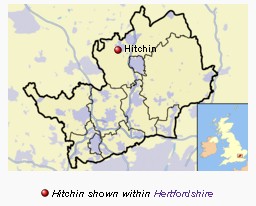 Hitchin
- Hitchin is first noted as the central place of the Hicce people
mentioned in a 7th
century document the Tribal
Hidage. The tribal name is Brittonic
rather than Old
English and derives from *siccā, meaning 'dry', perhaps a
reference to the local stream, the Hiz.
Hitchin
- Hitchin is first noted as the central place of the Hicce people
mentioned in a 7th
century document the Tribal
Hidage. The tribal name is Brittonic
rather than Old
English and derives from *siccā, meaning 'dry', perhaps a
reference to the local stream, the Hiz.
There exists credible evidence that Hitchin was the location chosen in 673 by Archbishop Theodore of Tarsus during the Synod of Hertford, the first nationwide meeting of representatives of the fledgling Catholic churches of Anglo-Saxon England, to hold annual synods of the churches as Theodore attempted to consolidate and centralise Catholicism in England.[1]
By 1086 Hitchin is described as a Royal Manor in the Domesday Book. Evidence has been found to suggest that the town was once provided with an earthen bank and ditch fortification probably in the 10th century but this did not last. The modern spelling 'Hitchin' first appears in 1618 in a document called the "Hertfordshire Feet of Fines".
Hertford Castle - was built on a site first fortified by Edward the Elder [Son of Alfred the Great.] around 911. By the time of the Norman Invasion in 1066, a motte and bailey were on the site surrounded by a moat. William the Conqueror granted the castle to Peter de Valoignes, the Sheriff of Hertfordshire and Essex.
Hertfordshire's Templar mystery - Article Page 4 - Temple Dinsley firmly enters the historical record in the Domesday Book in 1086, when Deneslai is recorded as a manor previously belonging to King Harold.
Hitchin - A History of the County of Hertford: volume 3 - The manor of HITCHIN was the head of the group of Hertfordshire manors held by Earl Harold, to which William I succeeded after the Conquest. These at the time of the Domesday Survey were farmed out together by the sheriff, and treated for some purposes as one integral manor. (fn. 60) The manors which belonged to or 'lay in' the manor of Hitchin were Wymondley, Mendlesdene (Minsden), Welei, Westone, Waldenei (King's Walden), Wavedene (Wandon), Cerletone (Charlton), Deneslai (Temple Dinsley), Offley, Welle (Wellbury in Offley), Wilei, Flesmere, Hexton, Lilley, Flexmere, Leglege (fn. 61) (Ley Green in King's Walden [?]), assessed in all at a total of some 37½ hides.
Of these manors two were attached to Hitchin by Harold himself. These were Wymondley, which he stole from the nuns of Chatteris, as the shire mote testified, (fn. 62) and Hexton. (fn. 63) King's Walden, Charlton and Offley were attached after the Conquest by Ilbert Sheriff of Hertfordshire, (fn. 64) while Dinsley, Wellbury and Welei were attached by Peter de Valoines, his successor. (fn. 65)
Hitchin itself was assessed at 5 hides only, although there was land for thirty-eight ploughs (including the land belonging to the minster). (fn. 66) The total value of Hitchin and its appurtenances was £106, whilst the sokes belonging to the manor were worth £40. (fn. 67) The services known as 'avera' and 'inward,' rendered by some of these manors, as due from the sokemen of the king, point to Hitchin's having been once ancient demesne. (fn. 68) The services, which were carrying services performed with a horse and cart, are distinctive of the two counties of Hertford and Cambridge, and in Hertfordshire the inward (inguard) is peculiar to Hitchin and its sub-manors. (fn. 69) Extents of the manor in the 13th and 14th centuries mention the services as owed by the customary tenants of the manor. (fn. 70)
According to the legend of the foundation of Waltham Abbey, as related in the 12th-century tract 'De Inventione sanctae Crucis,' Hitchin, or a part of Hitchin, (fn. 71) was held with Waltham, co. Essex, in the time of Canute by Tovi 'Pruda,' staller to Canute, a man of great importance, ranking second only to the king. He is said to have granted both Waltham and Hitchin to the church he founded at Waltham for the reception of the Holy Cross. (fn. 72) After the death of Tovi, however, his son Adelstan, who succeeded to the lands his father held as staller, forfeited these possessions, which
were granted by King Edward the Confessor to Earl Harold. (fn. 73)
A grant of Waltham was made by Harold to his new foundation there, and confirmed by Edward the Confessor. (fn. 74) The charter of confirmation mentions Hitchin as also in the possession of the abbey, but whether it was given by Harold at the same time as Waltham is not clear. (fn. 75) No further trace, however, of any connexion with the abbey has been found.
It is certain from the Domesday Survey that Earl Harold had held the manor, but in 1086 it was in the hands of William the Conqueror.
In the 13th century it was deposed by the jurors of the hundred that Hitchin was granted by William Rufus to Bernard de Baliol. (fn. 76) Nothing, however, is known of this Bernard before the reign of Stephen, and it seems more likely that the grant, if made by William II, was to Guy de Baliol, the founder of the English house, who is said to have received lands from William. (fn. 77) Bernard de Baliol was certainly holding before 1153. (fn. 78)
The Bernard de Baliol, one of the northern barons who raised the siege of Alnwick and took William the Lion prisoner, was apparently his son. (fn. 79) The younger Bernard was succeeded by his son Eustace, and Eustace by Hugh, his son. (fn. 80)
Hugh de Baliol mortgaged the manor to Benedict, a Jew of London, about
1204. (fn. 81) It descended to his son John de Baliol, who died in 1268, (fn. 82) after which his widow Devorgilda held it in dower. (fn. 83) His two elder sons Hugh and Alexander died without issue before 1278, and a younger son John then succeeded to the lands. (fn. 84)
This John (de Baliol) was crowned King of Scotland in 1292. He lost the kingdom in 1296, and his lands were
forfeited.
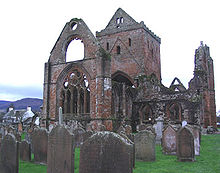 John Balliol
- (c. 1249 – c. 25 November 1314) was King
of Scots from 1292 to 1296. he was a great-great-great-grandson of
King David
I through his mother Dervorguilla of Galloway
John Balliol
- (c. 1249 – c. 25 November 1314) was King
of Scots from 1292 to 1296. he was a great-great-great-grandson of
King David
I through his mother Dervorguilla of Galloway
He was the son of John, 5th Baron Balliol, Lord of Barnard Castle, and his wife Dervorguilla of Galloway, daughter of Alan, Lord of Galloway and granddaughter of David, Earl of Huntingdon.[2] From his mother he inherited significant lands in Galloway and claim to Lordship over the Gallovidians, as well as various English and Scottish estates of the Huntingdon inheritance; from his father he inherited large estates in England and France, such as Hitchin, in Hertfordshire.
This all was a lead up to the Scottish revolution and Robert I (the Bruce) in 1306
[ Also a connection to Durham : The Balliol family into which Dervorguilla married was based at Barnard Castle in County Durham, England (where we later find Vtlages' at East Riding / Durham) ]
1340 - Seal - William Utlage (?), - Used by Robert of Durham, merchant.- Inscription: SIGILLVM WILELMI VTLAGE - Seal design: Round, armorial, a lion rampant. - pdf
Dervorguilla founded a Cistercian Abbey 7 miles south of Dumfries in South West Scotland, in April 1273. It still stands as a picturesque ruin of red sands ...Sweetheart Abbey
In the time of Edward the Confessor the manor of DINSLEY (Deneslai, xi cent.; Dineslea, Dineslega, xii cent.; Dunsle, Dynesle, Dinglo, xiii cent.; Dyonyse, xvii cent.) was in the possession of Earl Harold, and in 1086 it was held by King William.
(fn. 117) It was assessed at the time of the Survey at 7 hides.
It had been held of Harold by two sokemen as two separate
manors
, but when it came into King William's hands he gave it to Ilbert his sheriff for his term of office, and he held the two manors as one. (fn. 118) Each of these two manors rendered the service of 2 'averae' and 2 'inwardi.' (fn. 119) At the end of this time Ilbert refused to find the customary 'avera' due from the manor, and it was forcibly taken from him by Peter de Valoines, his successor, and Ralph Taillebois, who laid it to the king's manor of Hitchin. (fn. 120)
Charlton alias Moremead
The reputed manor of CHARLTON alias MOREMEAD was at the time of the Survey in the possession of King William. Before the Conquest
it had been held by two sokemen of Earl
Harold,
but had been attached by the sheriff Ilbert to Hitchin, in which its soke lay. (fn. 159)
The history of this manor is scanty, (fn. 160) but apparently it came into the possession of the Knights Templars, who received a grant of free warren there in
1269. (fn. 161) It was probably held by the Templars (fn. 162) and
then by the Hospitallers with the manor of Temple Dinsley (q.v.) until the suppression of the latter order. The manor subsequently came to Edward Pulter, who sold it in 1582 to Ralph Radcliffe, (fn. 163) from which time it has descended with Hitchin Priory (fn. 164) (q.v).
Mendlesden, Minsden, or Minsdenbury
The manor of MENDLESDEN, MINSDEN, or MINSDENBURY was a member of Hitchin, and passed with that manor from Earl Harold to the
Conqueror. (fn. 165) In the 12th century Minsden seems to have been held by Guy de Bovencourt, whose heir (unnamed) forfeited his lands in the reign of John. It was then granted to
Hugh de Baliol, (fn. 166) the lord of the manor of Hitchin.
Hichin since the conquest - Walden, Dinsley, Offley, Welle and Willei. But most already 'lay' there under Harold - they were manors held by him, and administistered from Hitchin. ... all the places in Hichin hundred which were not in Harold's hands in 1066 were held BY HIS 'MEN'.
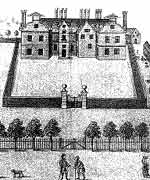 House of Knights Templars - Preceptory of
Temple Dinsley
House of Knights Templars - Preceptory of
Temple Dinsley
...
14. PRECEPTORY OF TEMPLE DINSLEY
In a chapter of the Order of the Temple held at Paris in the Octave of Easter 1147, (fn. 1) at which Pope Eugenius III was present, Bernard de Balliol gave the knights 'Wedelee,' a member of Hitchin, or land to the value of £15. (fn. 2) This estate, which was at Dinsley, (fn. 3) was confirmed to them by King Stephen, (fn. 4) who added two mills with the land and men belonging to them, (fn. 5) and granted them also sac and soc, tol and team and infangtheof, with all other free customs in Dinsley. (fn. 6)
At what date the preceptory at Dinsley was founded is not known, but that it was already established at the beginning of the 13th century is certain, since a chapter was held here between 1200 and 1205. (fn. 7) Besides, the agreement of Mabel Abbess of Elstow, c. 1218-22, (fn. 8) to pay the Templars a mark a year and 4 lb. of wax for the maintenance of a chaplain and the light of his chapel at Preston (fn. 9) was apparently later than the arrangement by which the nuns were to find a chaplain to perform divine service three times a week at Preston for the brothers of the Temple living at Dinsley. (fn. 10)
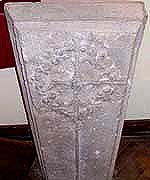 The property of the knights in the neighbourhood was increased
from time to time, (fn. 11) among the larger gifts being
13 acres of land in Wandon in King's Walden, (fn. 12) and
Charlton received in 1244-5 from Maud de Lovetot, formerly the wife of
Gerard de Furnival, (fn. 13) and 2 marks rent in Welles
in Offley (fn. 14) from John de Balliol. (fn.
15)
The property of the knights in the neighbourhood was increased
from time to time, (fn. 11) among the larger gifts being
13 acres of land in Wandon in King's Walden, (fn. 12) and
Charlton received in 1244-5 from Maud de Lovetot, formerly the wife of
Gerard de Furnival, (fn. 13) and 2 marks rent in Welles
in Offley (fn. 14) from John de Balliol. (fn.
15)
The Templars in January 1252-3 were granted by Henry III free warren in their demesne lands of Dinsley, Preston, Charlton, Walden and Hitchin. (fn. 16)
Not much is known about the preceptory, but it was perhaps fairly important. Chapters of the order, besides that already mentioned, were held here c. 1219-29, (fn. 17) c. 1254-9, (fn. 18) in 1265, (fn. 19) 1292, (fn. 20) 1301, (fn. 21) and 1304, (fn. 22) and, to judge from evidence given in 1310, on several other occasions. (fn. 23)
The preceptor's jurisdiction extended to Baldock, for in 1277 he was summoned to show warrant for hanging a man there. (fn. 24)
At the time when the Templars were all arrested by the king's order in January 1308 there seem to have been six brothers at Dinsley, since the manor was charged with the maintenance of that number between 14 February and 12 June while they were imprisoned in Hertford Castle. (fn. 25) Whether, however, they were resident at Dinsley, and whether they included Richard Peitevyn and Henry de Paul, 'brothers at Dinsley,' who were afterwards sent to the Tower of London, (fn. 26) is uncertain. There were besides six men then living at Dinsley as pensioners of the house: one who had meals at the squires' table and five who boarded with the brothers. (fn. 27)
After the suppression of the Order of the Temple in 1312 the manor was occupied for some years by the lords of the fee, and then let by them for 27 marks a year to William de Langford, who in 1338 was still the tenant. (fn. 28) The Knights of St. John had meanwhile become the owners in virtue of the Statute of 1324, (fn. 29) and eventually placed members of their order there, for the preceptory of Dinsley is mentioned in the reign of Richard II. (fn. 30)
How long this cell was maintained is doubtful. The manor was leased 12 September 1498 (fn. 31) to John Tong, preceptor of Ribston and Mount St. John, for the term of his life at a rent of £26 13s. 4d., Tong undertaking to find a chaplain to perform the religious services for which the lands had been given to the Templars. (fn. 32) It may, therefore, be concluded that Dinsley had then ceased to be a preceptory. Yet it seems likely that the arrangement marked a new departure and was regarded as temporary, for 9 November 1500 Prior Robert Kendal and the Chapter granted to Robert Shawe, chaplain, (fn. 33) his board in the manor of Dinsley at the table of their gentlemen there, a room and salary of 5 marks to be received from the prior, or from the preceptor, farmer or warden of the manor, and in return Shawe was to perform the services in the chapel as long as he was able.
It is clear, however, that the preceptory was never re-established. The manor was let in 1507 at £26 13s. 4d. a year to Thomas Hobson, who was to provide the chaplain and maintain for two days and nights the officials sent once or twice a year by the Prior of St. John to survey the property. (fn. 34) In 1514 it was let on the same terms to Reginald Adyson and his wife Dorothy for fifty years, (fn. 35) and their lease becoming void in 1519 through non-payment of the rent, to John Docwra for forty years. (fn. 36)
It is evident, therefore, that beyond a change in the ownership of the land the dissolution of the order of St. John in 1540 (fn. 37) made little difference here. (fn. 38)
The receipts of the Templars' estate at Dinsley from Michaelmas 1311 to Michaelmas 1312 were £82 19s. 9¾d., (fn. 39) but of this sum the amount derived from rents and profits of court was only £24 12s. 8d. In 1338, as has been said, the manor was let for £18, (fn. 40) in 1535 it was valued at £29 3s. 4d. a year. (fn. 41)
Preceptors of Dinsley
Richard Fitz John, occurs 1255 (fn. 42)
Ralph de Maltone, occurs 11 June 1301 (fn. 43)
John Dalton, occurs 1380-1 (fn. 44) and
September 1389 (fn. 45)
 Knights Templar in England
Knights Templar in England Ewyas Harold Castle
Ewyas Harold Castle This is a very historically important castle as it is one
of
only 4 pre-conquest castles in the country. Along with Hereford
Castle and Richards Castle it
helps demonstrate the importance of Herefordshire as a border county at the time
of the Norman Conquest.
This is a very historically important castle as it is one
of
only 4 pre-conquest castles in the country. Along with Hereford
Castle and Richards Castle it
helps demonstrate the importance of Herefordshire as a border county at the time
of the Norman Conquest.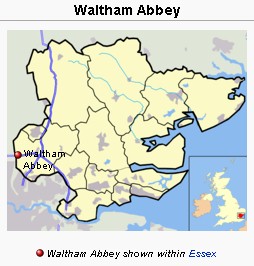
 Legend
has it that after Harold's death at the
Legend
has it that after Harold's death at the